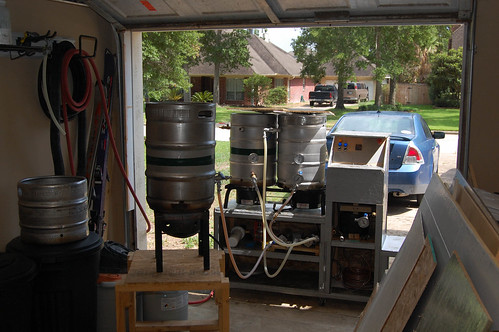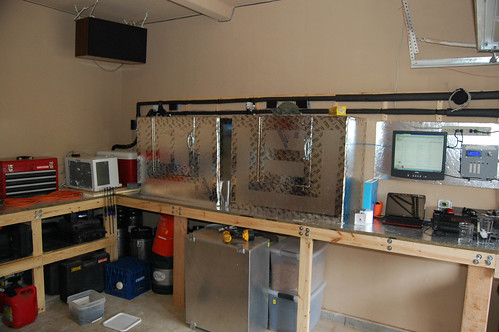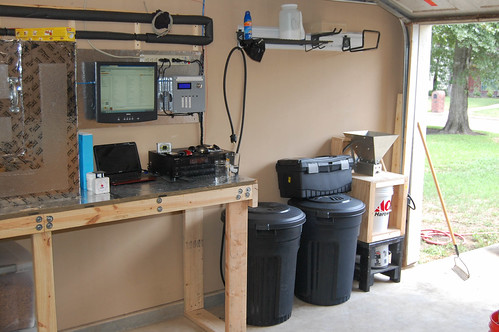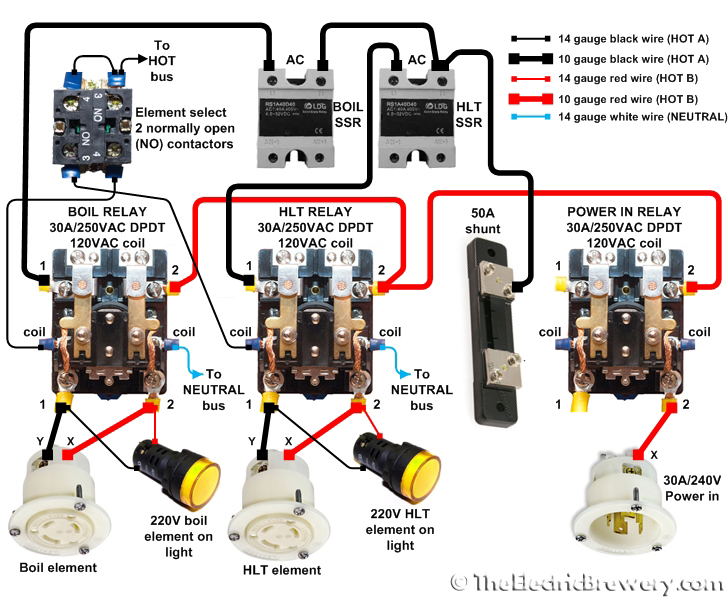hatrickwah
Sponsor
*** Plenty of pictures to come ***
Hey all, its been a while since I posted last, but it comes with moving I guess. I've moved to Houston in May and have been busy brewing away since. Built a slick glycol fermentation setup with room to grow, and have been relying quite heavily on my propane heated, single tier setup that I built last year. To sum a rather long story up, wife and I have come to agreement, I get to take a portion of my Christmas bonus this year and finally go all electric, and finish taking over half of my garage in the process.
Today I finalized the plans, once I picked up the breaker and Spa GFI disconnect at Home Depot I knew it could be done.
Here is a before shot of the brewery.

As well as my slick FermTroller fermentation setup:

Where it is ALL going to end up:

Keep in mind, I'm literally taking that entire wall in my garage and turning it into a brewery now.
The plans for this build:
- BCS control (no switches on the panel, since full computer in garage, plus tablet in reserve), K.I.S.S.
- ALL STAINLESS (including the HERMS coil), I'm done with copper; here in Texas copper is bad, too much humidity or something
- K.I.S.S. so the wife can even brew when she so chooses.
- Use as much from the original setup as possible
- Simple, but solid parts (taking a point from Kal's Electric Brewery build here)
- Plumb the water in so no garden hose is necessary for brewing!
Supplies for new build already obtained:
5500w Heating elements ULWD
50a Spa Disconnect with GFI
50a Breaker for panel
40a, 120v 2 pole contactors, (2)
Currently have:
3 kegs, great shape, mostly ready to go, 6 holes to cut maybe
-- From the currently functioning brewery
2 rocking pumps from Chugger, with recently replaced impellers and gaskets
Pumps wired via locking NEMA plugs, therefore have the plugs and outlets for the pumps
Couple spare 22mm pilot switches, will use these for power on/off on entire control box, plus maybe use my e-stop as well
Being that I have been busy adjusting from Wyoming to Texas brewing, I have a few other slick features to this brewery that I'll show off as well, once I implement them (just bought the last part over Thanksgiving).
Hey all, its been a while since I posted last, but it comes with moving I guess. I've moved to Houston in May and have been busy brewing away since. Built a slick glycol fermentation setup with room to grow, and have been relying quite heavily on my propane heated, single tier setup that I built last year. To sum a rather long story up, wife and I have come to agreement, I get to take a portion of my Christmas bonus this year and finally go all electric, and finish taking over half of my garage in the process.
Today I finalized the plans, once I picked up the breaker and Spa GFI disconnect at Home Depot I knew it could be done.
Here is a before shot of the brewery.

As well as my slick FermTroller fermentation setup:

Where it is ALL going to end up:

Keep in mind, I'm literally taking that entire wall in my garage and turning it into a brewery now.
The plans for this build:
- BCS control (no switches on the panel, since full computer in garage, plus tablet in reserve), K.I.S.S.
- ALL STAINLESS (including the HERMS coil), I'm done with copper; here in Texas copper is bad, too much humidity or something
- K.I.S.S. so the wife can even brew when she so chooses.
- Use as much from the original setup as possible
- Simple, but solid parts (taking a point from Kal's Electric Brewery build here)
- Plumb the water in so no garden hose is necessary for brewing!
Supplies for new build already obtained:
5500w Heating elements ULWD
50a Spa Disconnect with GFI
50a Breaker for panel
40a, 120v 2 pole contactors, (2)
Currently have:
3 kegs, great shape, mostly ready to go, 6 holes to cut maybe
-- From the currently functioning brewery
2 rocking pumps from Chugger, with recently replaced impellers and gaskets
Pumps wired via locking NEMA plugs, therefore have the plugs and outlets for the pumps
Couple spare 22mm pilot switches, will use these for power on/off on entire control box, plus maybe use my e-stop as well
Being that I have been busy adjusting from Wyoming to Texas brewing, I have a few other slick features to this brewery that I'll show off as well, once I implement them (just bought the last part over Thanksgiving).







